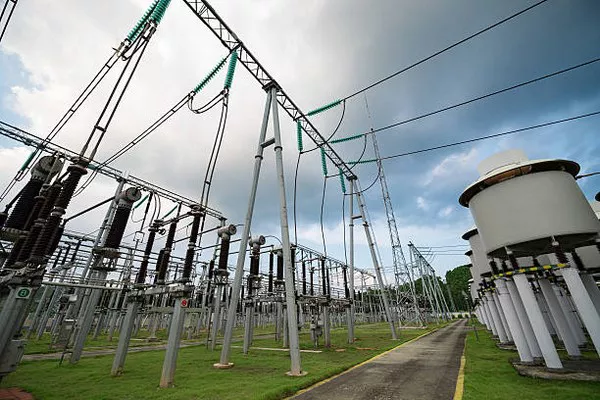Transformers play a crucial role in electrical systems, converting voltage levels to facilitate the efficient transmission and distribution of electricity. However, as technology advances and infrastructure ages, many transformers reach the end of their operational life. Proper management of these old transformers is essential to ensure environmental safety, regulatory compliance, and resource optimization. This article delves into the best practices for disposing of, recycling, and reusing old transformers, highlighting the environmental, economic, and regulatory aspects involved.
Assessing the Condition of Old Transformers
Before deciding on the appropriate course of action for old transformers, it is vital to assess their condition. This includes evaluating the remaining life expectancy, operational efficiency, and any potential environmental hazards such as leaks or contamination. Key steps in this assessment process include:
Visual Inspection: Checking for signs of wear and tear, corrosion, and oil leaks.
Electrical Testing: Performing tests like insulation resistance testing and transformer turns ratio testing to determine the electrical integrity.
Oil Analysis: Analyzing transformer oil for contaminants like polychlorinated biphenyls (PCBs), moisture, and dissolved gases.
Disposal of Transformers
When transformers are deemed unfit for reuse or recycling, proper disposal is essential to mitigate environmental risks. Transformers often contain hazardous materials such as PCBs and mineral oil, which can pose significant environmental hazards if not handled correctly.
Hazardous Material Handling: Ensure that any hazardous materials are identified and handled according to local, state, and federal regulations. PCBs, for example, are regulated under the Toxic Substances Control Act (TSCA) in the United States.
Dismantling and Segregation: Carefully dismantle the transformer to segregate hazardous components from non-hazardous ones. This step involves draining oil, removing windings, and separating core steel.
Certified Disposal Facilities: Transport the hazardous materials to certified disposal facilities that have the capability to safely incinerate or otherwise dispose of them in an environmentally sound manner.
Recycling of Transformers
Recycling is a preferred option as it allows the recovery of valuable materials and reduces environmental impact. The recycling process typically involves:
Decontamination: Removing any hazardous substances like PCBs to render the materials safe for further processing.
Metal Recovery: Separating and recovering metals such as copper and aluminum from the transformer windings and steel from the core and casing. These metals can be melted down and reused in various industries.
Insulation Material Processing: Recycling insulation materials, which can be processed to create new insulating products or used in other applications like road construction.
Oil Reclamation: Filtering and purifying transformer oil to be reused as lubricating oil or in other industrial applications.
Recycling not only conserves natural resources but also reduces the carbon footprint associated with manufacturing new materials.
Reuse and Repurposing of Transformers
In some cases, old transformers can be refurbished and reused, extending their life and providing cost savings. The reuse process typically involves:
Refurbishment: Repairing or replacing damaged components, reconditioning the core and windings, and ensuring the transformer meets current performance and safety standards.
Testing and Certification: Conducting comprehensive electrical and mechanical tests to certify the transformer for reuse.
Upgrading: Incorporating modern technologies such as improved insulation materials or cooling systems to enhance efficiency and reliability.
Repurposing involves adapting transformers for new applications. For example, transformers from decommissioned industrial plants can be repurposed for use in renewable energy projects like wind or solar farms.
Environmental and Regulatory Considerations
Managing old transformers is not just a technical and economic issue but also an environmental and regulatory one. Adherence to regulations ensures that disposal and recycling practices do not harm the environment or public health.
Regulatory Compliance: Familiarize with and comply with regulations governing the disposal and recycling of transformers, such as the Resource Conservation and Recovery Act (RCRA) and TSCA in the U.S., or equivalent regulations in other countries.
Environmental Impact Assessments: Conduct environmental impact assessments to evaluate the potential effects of transformer disposal or recycling activities on local ecosystems.
Sustainable Practices: Implement sustainable practices such as minimizing waste, reducing energy consumption during recycling processes, and maximizing the recovery of reusable materials.
Economic Considerations
The economic aspect of managing old transformers is significant, with potential cost savings and revenue generation through recycling and reuse.
Cost Savings: Reusing refurbished transformers can provide significant cost savings compared to purchasing new units. Additionally, efficient recycling can reduce disposal costs and generate revenue from the sale of recovered materials.
Market Value of Recyclables: The market value of metals like copper and aluminum, which are commonly found in transformers, can fluctuate. Understanding these market dynamics can help optimize the timing of recycling activities to maximize revenue.
Investment in Technology: Investing in advanced recycling technologies can improve efficiency and material recovery rates, providing long-term economic benefits.
Best Practices and Recommendations
To ensure effective management of old transformers, consider the following best practices:
Develop a Comprehensive Plan: Create a detailed plan that covers the assessment, disposal, recycling, and reuse of transformers. This plan should include timelines, responsibilities, and compliance measures.
Partner with Certified Vendors: Work with certified disposal and recycling vendors who have the expertise and facilities to handle old transformers safely and efficiently.
Training and Awareness: Train personnel involved in transformer management on best practices, safety protocols, and regulatory requirements.
Continuous Improvement: Regularly review and update practices based on new technologies, regulatory changes, and lessons learned from past experiences.
See Also WHERE TO BUY DOORBELL TRANSFORMERS
Conclusion
The proper management of old transformers is a multifaceted process that requires careful planning and execution. By assessing the condition of transformers, adhering to regulatory requirements, and implementing best practices for disposal, recycling, and reuse, organizations can mitigate environmental risks, comply with regulations, and optimize economic outcomes. Embracing sustainable practices in transformer management not only conserves resources but also contributes to the broader goal of environmental stewardship. As technology and regulations continue to evolve, staying informed and proactive will be key to successful transformer lifecycle management.

